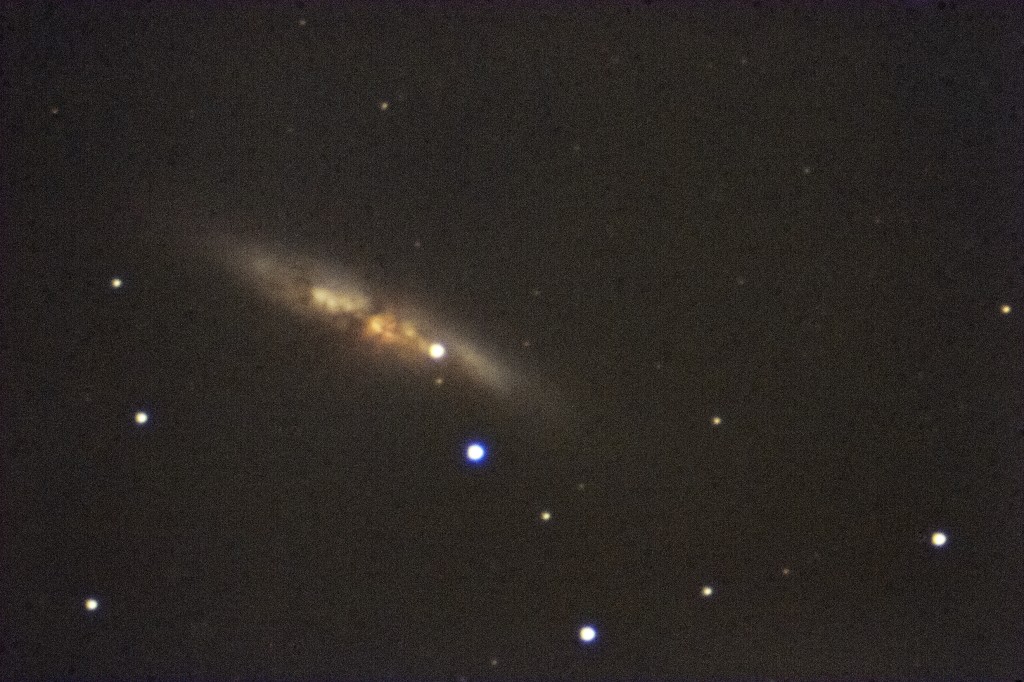![]() LISTEN to this week’s Sky Report
LISTEN to this week’s Sky Report
This is the Griffith Observatory Sky Report for the week ending Wednesday, February 12, 2014. Here is what’s happening in the skies of Southern California:
The innermost planet, Mercury, can be seen low in the west-southwest at about 5:50 p.m. until the 9th. Night by night, Mercury’s elevation above the horizon drops from 11 degrees to 5 degrees on the 9th, but becomes too difficult to see after that. The planet looks like a solitary star to the unaided eye. A telescope is needed to see Mercury’s crescent phase.
The largest planet, Jupiter, is in Gemini the Twins. It is high in the east during evening twilight and is nearly overhead at about 10:00 p.m. Jupiter sets in the west-northwest before dawn. Binoculars will show the four largest of the planet’s many moons, and a telescope will show details of the clouds in the planet’s atmosphere. The famous oval storm, the Great Red Spot, will be visible from Los Angeles at 9 p.m. on February 6th and 8th. Jupiter is currently the featured planet through Griffith Observatory’s public telescopes.
The moon gains in prominence this week. It changes phase from crescent to first quarter on the 6th, and after is waxing gibbous until it reaches full on the 14th. The moon poses near Jupiter on Monday the 10th. We should get word on the fate of China’s Yutu (Jade Rabbit) moon rover after the sun rises on it on the 8th. Last month, Yutu encountered trouble folding its solar panels before sunset and the start of the 2-week-long lunar night. This may have fatally damaged the rover by over-exposure to low temperatures.
The Red Planet Mars is the brightest object in Virgo the Maiden. This week, Mars draws to within 1 astronomical unit–the sun’s distance from us. When the air is steady, a telescope of 5-inches or greater diameter and high magnification should allow the planet’s major features to be seen. Mars will come closest to us in April.
Golden planet Saturn is in Libra the Scales and is in the southeast sky, 29 degrees to the lower left of Mars, at the start of dawn. A telescope can be used to see the north face of the planet’s stunning rings, now tilted 23 degrees in our direction.

The supernova SN2014J in galaxy M82 in Ursa Major was imaged through Griffith Observatory’s 12-inch Zeiss refractor. It is the bright dot within the galaxy and to the lower right of the galaxy’s center. This six-minute exposure was started on February 3 at 7:48 p.m., PST (February 4.116 UT). A Canon 20Da Camera was used at 1600 ISO. Image: Anthony Cook/Griffith Observatory
Supernova SN2014J in galaxy M82 of Ursa Major, the Great Bear, will start to decline in brightness this week. It should, however, remain bright enough to see through most telescopes for at least all of this week. The galaxy can be glimpsed (with some difficulty) through suburban light pollution if weather conditions are clear, but can be seen in ordinary binoculars from wilderness locations free from light pollution. Viewing information and finder charts can be found on Sky and Telescope’s special web page.
The International Space Station makes two evening passes high above Los Angeles this week. On Wednesday the 5th, The ISS will appear above the southwest horizon at 7:03 p.m. Moments after it reaches its highest point, 64 degrees above the northwest horizon, the space station will quickly fade into earth’s shadow. On the next evening, Thursday the 6th, the ISS appears above the southwest horizon at 6:15 p.m., climbs to 63 degrees above the southeast horizon at 6:18 p.m., and disappears into earth’s shadow 16 degrees above the northeast horizon. The ISS is expected to outshine Jupiter on both passes.
Free views of the sun during the day and of the moon, planets, and other celestial objects at night, are available to the public in clear weather through Griffith Observatory’s telescopes Tuesday-Sunday before 9:30 p.m. Check our website for our schedule. The next public star party on the grounds of Griffith Observatory, hosted by the Los Angeles Astronomical Society, the Sidewalk Astronomers, and the Planetary Society, will take place on Saturday, February 8.
From Griffith Observatory, I’m Anthony Cook and I can be reached at griffithobserver@gmail.com.
